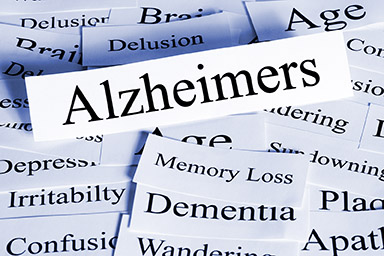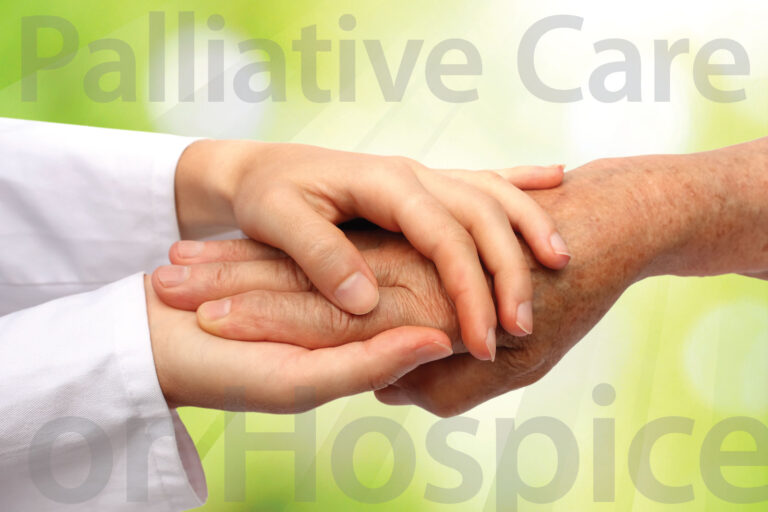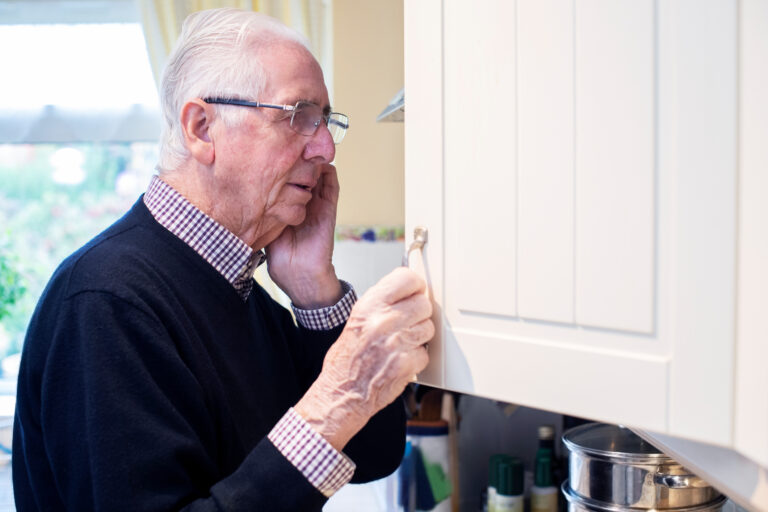If your loved one has recently stopped eating and drinking, is losing weight, and appears withdrawn, they may be experiencing failure to thrive. The term “failure to thrive,” or FTT, originated in pediatric care. Today, it’s used to describe a set of symptoms in adults characterized by physical and mental decline.
Failure to thrive in adults, sometimes called geriatric failure to thrive or elderly failure to thrive, can be treated, and is often reversible with the right interventions. However, sometimes things don’t improve. It’s important to have a plan for what may come if your loved one’s health continues to deteriorate.
Read on to learn more about failure to thrive in adults, its symptoms, treatment options, ways you can help your loved one, and how hospice care can help your family cope.
Are you or a loved one living with a chronic or terminal illness?
The Sage Family of Companies is here to help.
Are you or a loved one living with achronic or terminal illness?
The Sage Family of Companies is here to help.
What Is Failure to Thrive in Adults?
Failure to thrive in adults is a condition in older adults marked by physical and mental decline. It’s most common in elderly people with multiple chronic conditions. FTT isn’t one specific disease but a term used to describe a set of symptoms, including poor appetite, weight loss, and isolation.
Signs and Symptoms of Failure to Thrive in Adults
Often, older adults experiencing signs of failure to thrive don’t want to be a burden on their families, and may not mention their symptoms. Adult FTT can also come on gradually. Family members may not even realize it’s happening, especially if your loved one remains independent or lives alone.
Common signs and symptoms of failure to thrive in adults can include:
- Loss of appetite
- Unexplained weight loss
- Loneliness and withdrawing from others
- Depression
- Cognitive impairment or decline
- Confusion
- Decrease in physical activity
- Memory loss
- Inability to partake in daily tasks
If they aren’t addressed, symptoms of failure to thrive in adults can greatly impact quality of life and lead to further mental and physical deterioration.
Causes of Failure to Thrive in Adults
There’s no one specific cause of failure to thrive in adults, and it’s often a combination of physical, mental, social, and financial factors. FTT is most common in older adults with several chronic conditions that cause bodily changes, which may affect overall well-being.
The following personal and medical problems may raise the risk of adult FTT:
- Chronic diseases, such as cancer, heart disease, lung disease, cystic fibrosis, and diabetes
- Dementia
- The recent loss of a loved one
- Poor nutrition
- Depression
- Chronic pain
- Difficulty swallowing
- Hearing or vision loss
- Side effects of medications
- Financial struggles
- Lack of social interactions
- Alcohol or drug abuse

Diagnosis of Failure to Thrive in Adults
Since failure to thrive in adults is not a specific disease, but a group of symptoms that describe a person’s state of physical and cognitive decline, there’s no single test to diagnose it. If your loved one’s doctor suspects they have failure to thrive, they’ll start with a full medical history and physical exam.
The doctor will then go over current medical conditions and any medications and supplements your loved one is taking. They may also ask about your loved one’s eating habits, physical activity, mood, and sleep.
To diagnose FTT in adults, a healthcare provider may order the following tests:
- A mental health exam to check for signs of social isolation and depression
- Blood and urine tests to screen for undiagnosed diseases and infections
- Tests to check for hearing or vision loss
- CT scans, X-rays, or MRIs to look for tumors or infections
Treatment for Failure to Thrive in Adults
Treatment for failure to thrive in adults depends on the cause, but it’s typically comprehensive. Often it will focus on reducing pain and managing chronic conditions. Your loved one’s doctor may also change their prescription medications or dosage to minimize side effects. Medication and cognitive behavioral therapy can also help increase appetite and improve mood.
Additionally, lifestyle changes, including dietary changes and increased physical activity and socializing may help reverse failure to thrive.
Are you or a loved one living with a chronic or terminal illness?
The Sage Family of Companies is here to help.
Are you or a loved one living with achronic or terminal illness?
The Sage Family of Companies is here to help.
How to Help a Loved One With Failure to Thrive
When your loved one fails to thrive, it can be alarming and extremely upsetting. At times, you may feel completely hopeless, especially if your loved one is refusing to eat or drink. But there are plenty of ways you can help.
Offer Meal Prep
Make food more appealing to your loved one by helping to prepare accessible meals that they like, and aren’t challenging to eat. Keep their fridge and pantry stocked with easy-to-grab snacks like fruits, yogurt, hummus, and crackers, which can help add calories between meals. If you need help, consider consulting a dietitian. You can also ask their doctor if nutritional supplementation may help.
Make Sure Your Loved One Stays Hydrated
Monitor how much water and other liquids your loved one is drinking, to prevent dehydration. Ask their doctor how many glasses they should drink per day, and which liquids are best.
Encourage Light Physical Activity
Check with your loved one’s provider about which activities are safe. Make an effort to get them moving, and if they’re able, ask them to go for a walk to the park or around the block. If your loved one is homebound, have them help with activities around the house, such as chores or gardening. You might even play some upbeat music and encourage a little dancing.
Any kind of physical activity can help increase appetite and improve mental health.
Help Prevent Falls
Falls are a major cause of injury and death in older adults, so it’s important to take preventive measures. Remove tripping hazards like small rugs, electrical cords, and shoes from hallways and walking paths. Keep these areas well-lit and free from clutter. To prevent falls in the bathroom, consider installing grab bars and a sturdy shower chair.
Support Social Interactions
Encourage your loved one to have regular social interactions with family members, friends, and neighbors. Building a sense of community can help ease loneliness, which can have a direct impact on mental health. If your loved one is unable to leave their home for in-person visits, help them set up video or phone calls to stay in touch.
When It’s Time to Consider Hospice
If your loved one isn’t showing signs of improvement, and their health problems are intensifying, it’s time to consider different options. Especially if your loved one has stopped eating or drinking, decline can come rapidly and can quickly turn fatal. If you’re feeling burnt out and your loved one’s doctor thinks the end of life may be near, hospice care can help.
Typically, your loved one will be eligible for hospice care if their provider estimates that they have six months or less left to live. This specialized type of care focuses on providing relief from pain and other symptoms as the end of life approaches.
When a young, middle-aged, or elderly patient starts hospice, doctors stop administering curative treatment. This allows the disease to take its natural course, but your loved one will still receive medical care, including medications and other therapies aimed at comfort. Other resources, such as caregiving assistance, mental health counseling, access to a dietitian, and spiritual guidance are also available. Family members can also access bereavement counseling and support groups, to help them cope at this difficult time.
Hospice can be administered at home or in a nursing home or other healthcare facility.
Failure to Thrive FAQ
Here are answers to some of the most frequently asked questions about failure to thrive in adults.
Can Failure to Thrive in Adults be Reversed?
Failure to thrive in adults can be reversed with the right interventions. This usually means managing pain and chronic health conditions, altering medications to reduce side effects, making dietary changes, starting counseling or cognitive behavioral therapy, and encouraging physical activity and social interactions.
What Is the Life Expectancy for Failure to Thrive in Adults?
The life expectancy for an adult with failure to thrive can vary greatly, and the timeline isn’t very well researched. One study found that hospitalized adults with failure to thrive have a mortality rate of 15.9 percent. However, failure to thrive is reversible, and with the right interventions it’s possible to get better.
Summary
If someone in your family is experiencing failure to thrive, it can be deeply unsettling, but there are plenty of ways you can help your loved one. If deterioration continues and the end of life is near, hospice care can step in to support your whole family.
The Sage Family of Companies is here to answer any questions you may have.
Article Resources
- Geriatric failure to thrive, NIH, 2004
- Geriatric Failure to Thrive, AFP Journal, 2004






